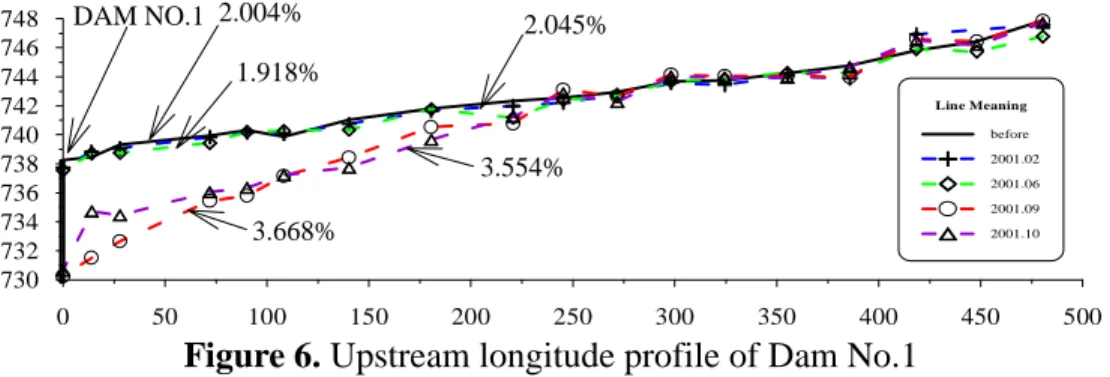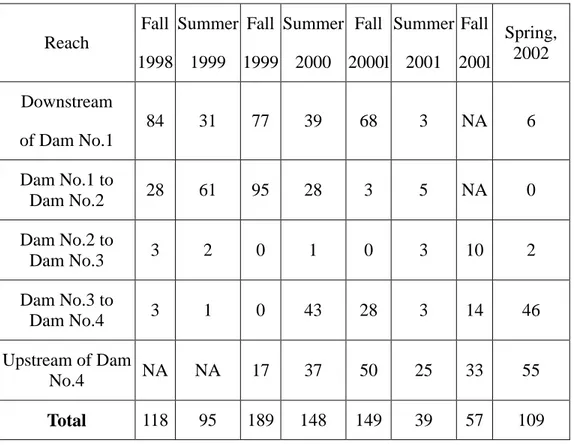Habitat improvement techniques for aquatic fishery: application experiences at Ta-Chia River in Taiwan
Full text
(2) Habitat Improvement Techniques for Aquatic Fishery. ecology environment. To protect and support the increasing population along the rivers, various hydraulic structures (such as revetments, dams, and reservoirs) had been widely constructed such that the formations and characteristics of river habitats had changed greatly at the downstream area. In the past, people consider flood prevention and nature conservation in river management are often two inter-conflict targets. But with the development of river rehabilitation, the design principles and application practices have been progressively developed to meet the goals of maintaining channel morphological change, flood prevention, ensuring stream substantial value (Downs & Thorne, 2000). Besides, The Committee on Restoration of Aquatic Ecosystems (National Science Council, 1992) suggested that decreasing the stresses of stream and river can directly improve stream ecological environment and achieve the objective of stream rehabilitation. Techniques of habitat improvement are widely found recently in various cases, including fishway facilities, vegetation methods, natural materials (i.e., log, rock, net, and lure) habitat improvement facilities, and other management/control policies. Hey (1996) divided the measures of habitat rehabilitation and river habitat improvement into two main categories, structural and nonstructural methods. Nonstructural methods are ways of reconstructing the natural condition in certain part of a river. These recovering construction of river meanderings, pools, shallow area, vertical stream banks, and dead zones are often applied to lowland rivers. The structural restoration methods uses different artificial instream structures to create ponded reaches and bars form and prevent siltation to maintain substrate condition through various kinds of structures, such as weirs/dams, deflectors, and vanes (Figure 1). In this paper, two stream restoration projects with similar concepts described previously applied at the Ta-chia River of Taiwan are introduced. With various techniques and their ecological effects, the authors report the efforts and the experiences on river fishery rehabilitation.. 2. Habitat Improvement At Downstream Area Of Ta-Chia River At the central part of Taiwan, Ta-chia River is a well-known natural scenic and fish habitat area for it’s convenient transportation, beautiful scenery, and plentiful water resources. Due to limited natural resources for electricity generation, waterpower has become one of the main power resources in Taiwan for decades. Therefore, several reservoirs and dams were constructed on Ta-chia River for its waterpower resource, while the impact on stream habitats has also increased. To meet the water demands for waterpower generation and fishery habitat, a research project of three and half years was initiated at 1990 to resolve the water-use conflict problem under the pressure from local environmental organization at downstream area of Ta-chia River. Hydrology Days 2003. 105.
(3) Lin et al.. Figure 1. River habitat improvement using structural methods: (a) weirs/dams; (b) deflectors; (c) submerged vanes (Hey, 1992). 2.1 Habitat improvement principles and Techniques With the experiences of field investigations and visits of advanced countries in this field, four planning and construction principles for downstream fishery habitat improvement were concluded as (Ho and Tuan, 1991): (1) maintain the natural stream landscape as natural as possible; (2) management, design, and construction of improvement techniques should be based on the trails of bed-load and stream channel; (3) emphasis should be on the persistency of artificial pools; and (4) efficiently utilize of limited budgets. Various structural techniques, including rock weir of partial width, rock deflector, tire weir with opening, channel dredge, concrete deflector with rock pavement, and riverine recreation zone, were designed and applied based on the restoration functions of techniques and social-economic considerations of construction sites (Figure 2). The pictures of different types of techniques were shown as follows. 2.2 Comparisons on the environmental and ecological effects To verify the environmental and ecological effects of these channel improvement techniques, series investigations of habitat condition and surveys of fishery population were applied at the same time from 1990 to Hydrology Days 2003. 106.
(4) Habitat Improvement Techniques for Aquatic Fishery. 1993. The analysis results indicated that only partial and mild change on stream hydrology and water quality was discovered after the construction of these measures (Wang, 1996). In general, the reaches with rock deflectors or rock weirs of partial width not only had lower landscape impacts but also had better overall improvements on fishery community and habitat complexity (Table 1).. Figure 2. Locations and techniques of habitat improvement applied at downstream area of Ta-Chia River Table 1. Habitat analysis of habitat improvement sites at downstream Ta-Chia River Riverine Rock weir of Rock Reflector Used Tire Weir recreation zone partial width #1 Landscape Environment. Harmony. Harmony. Not Harmony. Channel Mild changes Mild changes Huge changes Environment Increase of Increase of Flow Regime pools, riffles, pools, riffles, & backwaters & backwaters Habitat Complexity. Increase Obviously. Increase Obviously. Mild changes Huge changes Increase of pools, riffles, & backwaters. Increase of bank slow runs & deep flows. Increase. Increase Obviously. Increase. Increase Increase 2~8 0.6~2.3 times times. Increase 11~48 Increase 4~68 Increase 15~38 Increase times times times 1.6~4.7 times. Hydrology Days 2003. 107. Harmony. Increase of pools, deep flows, & backwaters. Catch Per Increase 3~14 Increase 1~15 Increase 5~19 Under Effort times times times Catch Density. Not Harmony. Riverine recreation zone #2. Increase 18~35 times.
(5) Lin et al.. Photo 5. Concrete deflector with rock pavement. Photo 1. Rock weir of partial width. Photo 2. Rock deflector. Photo 6. Riverine recreation zone #1. Photo 3. Tire weir with opening. Photo 7. Riverine recreation zone #2. Photo 4. Channel excavation Photo 8. Riverine recreation zone #3 Hydrology Days 2003. 108.
(6) Habitat Improvement Techniques for Aquatic Fishery. 3. Habitat Improvement At Upstream Area Of Ta-Chia River Identified as land-locked salmon, Formosan Landlocked Salmon (Oncorhynchus masu formosanum) had been recognized as natural monument for its biological importance by Japan government at 1938 during its colonization of Taiwan. At 1940s, several high altitude streams in central Taiwan, including Chi-Chia-Wan Creek, were their main habitat regions (Shei-Pa National Park, 1998). However, Formosan Landlocked Salmon right now only can be found in the Chi-Chia-Wan Creek and its tributary channels (Figure 1). According to the research of Lin & Liang (1990), appropriate habitat condition for salmon and trout should include several key environmental elements. In Taiwan, these elements are low water temperature (below 16°C), high dissolved oxygen in the water (above 6ppm), sufficient flow discharge, well cover of plantation shade over channel, adequate food source from invertebrate, and non-polluted channel bed for eggs’ spawn, hatch, and protection. However, increasing human activities (i.e., wild fire, deforestation, over-cultivation, pollution, mining, flood and drought, and changes in channel formation and characteristics) around their habitat often effect these key elements and become as threats for their survival. Chang (1990) further classified the changes of habitation environmental factors into physical, chemical and biological changes. In his definition, construction of dams or weirs across channel, development activities, and deforestation of watershed or channel banks are the major physical changes for channel habitat. For Formosan Landlocked Salmon, major changes in habitat result from physical changes, especially from increase of water temperature and isolation of population. While climate irregular alteration, channel development, deforestation, and reservoirs are the causes for temperature increasing (Lin & Liang, 1990), check dams in the channel separate entire population in to groups without gateway for exchange for this special salmon. According to the field investigation of Tzeng et. al. (2000) since 1997, check dams in Chi-Chia-Wan Creek not only increase water temperature in the downstream channel (below Dam No. 2) and cause high fatal rate of zygote during mating periods, but also lead to the situation of gene homogeneity for each population within one section. With high concentration of sedimentation during flood periods, fishways to over-pass check dams were found infeasible for sediments blocking in the fishways. Therefore, searching for appropriate approach to enhance channel habitat of Formosan Landlocked Salmon has been the major objective for Shei-Pa National Park since 1990s. To resolve the problem of existing for Formosan Landlocked Salmon, Shei-Pa National Park have implemented several conservation works simultaneously, including dam partial-removals at Gau-Shan Creek. Without any previous experience on dam removal/remodeling for ecological conservation purpose in Taiwan, this study first confirmed the idea of dam-removal based on the results of related research and literature mentioned previously. Field investigation, channel survey, and hydrological analysis Hydrology Days 2003. 109.
(7) Lin et al.. were then processed before conducting model experiments. The main objective of flume experiment is to observe the channel reactions regarding to various combinations of opening shapes and dam partial-removal procedures. Suggestions on channel habitat enhancement for Formosan Landlocked Salmon were then concluded from experimental findings. After necessary administration procedures in several related management agencies, implementation of dam removal was finally taken into action while follow-up investigations on the change of channel morphology were scheduled to monitor and record the whole process of habitat restoration in the study reach. Consequently, the research methodology for this study was assembled by these components and illustrated as Figure 3.. 3.1 Implementation of dam partial-removal and follow-up investigation Being one of the upstream branches of Ta-Chia River, Gau-Shan Creek is one of few creeks without other human activities except four serial check dams constructed during the 70’s to prevent massive riverbank landslides and sedimentation into downstream reservoirs. With support from model experiments, the implementations of removal for each dam were separated with certain observation periods in between (Table 2). According to recent field investigation (Yeh, 2002), each reach has different geomorphologic condition directly related to the implementation time of its downstream dam. For example, from longitude profile changes, reaches above dam No.3 and No.4 are gradually stabilized (Figure 5), while the reach between dam No.1 and No.3 is still under transition period (Figure 6). The gradients of these reaches before and after dam removals are listed in Table 3 along with brief description about the flush chute connected to each dam.. Table 2. Partial Dam removals implemented at Gau-Shan Creek Implementation April, 1999 Time Dam. No.4. Hydrology Days 2003. October, 2000. September, 2001. December, 2001. No.3. No.1 and 2. Enlarged the opening of No.1. 110.
(8) Habitat Improvement Techniques for Aquatic Fishery. Field Investigation. geological survey. river basin geological amount. bed material analysis. hydrology and fooding analysis. model calculation and design. model sediment calculation and sediment mixing. critical resultant driving force method. critical velosity method. model making and testing. hydraulic model tests. data analysis. Figure 3. Flowchart of dam removal model experiments. Hydrology Days 2003. 111.
(9) Lin et al.. Table 3. Investigations results on channel morphology for each reach Average Gradient %. Reach. Flush chute connected to each dam. Origin 2001/10 Upstream of 3.86. 6.68. 90m long, forming step pools, and gradually stabilized.. Dam No.3 to Dam No.4. 3.08. 4.13. 100m long, forming step pools, and gradually stabilized.. Dam No.2 to Dam No.3. 2.07. 3.33. 150m long, thalweg deflecting to right bank.. Dam No.1 to Dam No.2. 2.00. 3.67. 250m long, thalweg deflecting to right bank. Dam No.4. DAM NO.4. 802 800 798 796 794 792 790 788 786. 6.725%. 3.857% Line Meaning before 2001.02. 6.94%. 2001.06. 7.836%. 2001.09 2001.10. 6.68% 0. 10. 20. 30. 40. 50. 60. 70. 80. 90. 100. 110. 120. 130. 140. Figure 5. Upstream longitude profile of Dam No.4. DAM NO.1 2.004%. 748 746 744 742 740 738 736 734 732 730. 2.045%. 1.918% Line Meaning before 2001.02. 3.554%. 2001.06 2001.09. 3.668% 0. 50. 100. 2001.10. 150. 200. 250. 300. 350. 400. Figure 6. Upstream longitude profile of Dam No.1 3.2 Habitat changes before and after partial dam removal Hydrology Days 2003. 112. 450. 500.
(10) Habitat Improvement Techniques for Aquatic Fishery. To understand the effect of check dam partial removal, semi-annual population survey Formosa Landlocked Salmon in these reaches has been conducted since 1997. The investigation results (Tzen 2000, 2001, 2002) not only show spatial distribution of the population in the creek and also displays the effect of dam removal on channel continuity. The total numbers of salmon found within each reach are tabulated as follow (Table 4). However, the analysis results on the compositions of channel habitats, i.e., riffles, runs, deep runs, and pools, indicated that there is no statistical difference for the conditions before and after partial dam removals in the reach between Dam No.3 and No.4 (Lin et. al, 2001).. Table 4. Number of Formosa Landlocked Salmon found in Gau-Shan Creek Reach. Fall Summer Fall Summer Fall Summer Fall Spring, 1998 1999 1999 2000 2000l 2001 200l 2002. Downstream 84. 31. 77. 39. 68. 3. NA. 6. Dam No.1 to Dam No.2. 28. 61. 95. 28. 3. 5. NA. 0. Dam No.2 to Dam No.3. 3. 2. 0. 1. 0. 3. 10. 2. Dam No.3 to Dam No.4. 3. 1. 0. 43. 28. 3. 14. 46. Upstream of Dam NA No.4. NA. 17. 37. 50. 25. 33. 55. 118. 95. 189. 148. 149. 39. 57. 109. of Dam No.1. Total. Hydrology Days 2003. 113.
(11) Lin et al.. Photo 9. Dam No.4 in construction (April, 1999). Photo 13. Dam No.2 before construction (Oct., 1997). Photo 10. Dam No.4 condition (Oct., 2001). Photo 14. Dam No.2 recent condition (Oct., 2001). recent. Photo 11. Dam No.3 before construction (Oct., 1997). Photo 12. Dam No.3 condition (Nov., 2000). Hydrology Days 2003. Photo 15. Dam No.1 before construction (April, 2001). Photo 16. Dam No.1 recent condition (Dec., 2001). recent. 114.
(12) Habitat Improvement Techniques for Aquatic Fishery. 4. Conclusion In general, the major objectives of river basin habitat improvement project could be protection of specific species, maintaining biological diversity for river habitats, and landscape esthetics and riverbed stability (Shen & Chen, 1998). In this paper, two different projects demonstrated the application techniques and their conservation concepts behind, when one project aimed to provide diverse habitat patterns under the constraint of limited channel flow at the downstream area of Ta-Chia River, the other project focused on the restoration of channel continuity at the upstream creek. Although differed in aims and approaches, these two projects were advised to make necessary modifications with the opinions from ecologists who conducted investigation at studies sites. In the case of dam removal of Gau-Shan Creek, ecologist suggested that the dam opening should be extended downward to decrease the water level difference at the site of dam No.3 after 10 months of implementation such that Formosa landlocked salmon can jump over the dam.. Reference Abrahams, A.D. & J.F. Atkinson. 1995. Step-pool streams: Adjustment to maximum flow resistance. Water Resources Research, 31(10) pp. 2593-2602. Chang, K.S. 1990. Fish Ecology. pp. 15-22. In: Proceedings of Aquatic Fishes Conservation in Forest Rivers, National Taiwan University, Taipei, Taiwan. (In Chinese) Chiou, G.G. 1990. Habitat Investigation and Improvement for the Aquatic Fishes in Forest Rivers. pp. 139-188. In: Proceedings of Aquatic Fishes Conservation in Forest Rivers, National Taiwan University, Taipei, Taiwan. (In Chinese) Hey, R.D. 1996. Environmentally Sensitive River Engineering. pp. 80-105. In: Petts, G. et al (ed.), River Restoration: Selected Extracts from the Rivers Handbook, , Blackwell Science Ltd. Oxford, UK. Lin, Y.S. & S.S. Liang. 1990. Ecology of Salmon and Trout. pp. 33-52. In: Proceedings of Aquatic Fishes Conservation in Forest Rivers, National Taiwan University, Taipei, Taiwan. (In Chinese) Ouyang, C. F. et al, 1997, Chapter 2: Hydrologic Cycle. pp. 13-26. In: Use and Conservation of Water Resources, National Open University, Taipei, Taiwan. (In Chinese) Shei-Pa National Park. 1996. Shei-Pa National Park, pp. 37-38, Taichung, Taiwan. Hydrology Days 2003. 115.
(13) Lin et al.. Tuan, C.H. 1993. A Study of Excavation and Scouring-Depositing for Pools and Channel of Tachia River, Research Report, Graduate Institute of Soil and Water Conservation, National Chung Hsing University, Taichung, Taiwan. (In Chinese) Tzeng, C.S., C.M. Yu & C.H. Yang. 2000. Studies on Population Ecology of the Formosan Landlocked Salmon. pp.115-135. In: Proceedings of The Workshop on Conservation of the Taiwan Masou Salmon, Taiwan Endemic Species Research Institute, Nantou, Taiwan. (In Chinese) Wang, C.M. 1998. Ecological Assessment for the Fish Habitat Improvement Project Conducted in Tachia River of Taiwan. pp. 151-186. In: Proceedings of Chinese-Japanese Symposium on Ecological Conservation of Streams, National Taiwan Normal University, Taipei, Taiwan. Yeh, C.H. & C.H. Tuan. 1994. Hydrological and Hydraulic Characteristics of Flood-Detention Dam. Journal of Chinese Soil and Water Conservation, 25(4), pp.181-189. (In Chinese) Yeh, C.H., P.H. Ling, & C.H. Tuan. 2001. A Study of Effects of Check Dam Remodeling on the Changes of Channel Morphology and Habitat Formations for Gau-Shan Creek, Journal of National Park, 11(1) pp. 71-85. (In Chinese) Yeh, C.H. & H.P. Lien. 2001. An Experimental Study of Channel Habitat Improvement for Formosan Landlocked Salmon. pp. 255-263. In: Proceedings of 21st Annual American Geophysical Union “HYDROLOGY DAYS”, Colorado State University, Fort Collins, USA.. Hydrology Days 2003. 116.
(14)
Figure
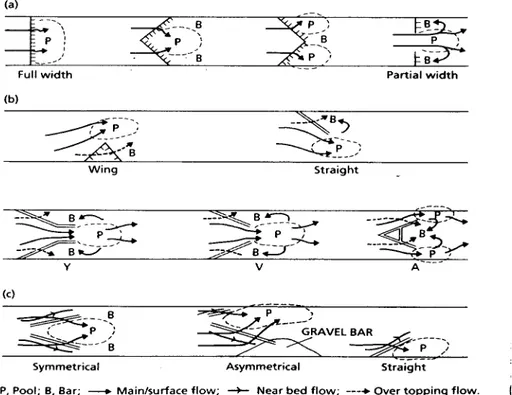
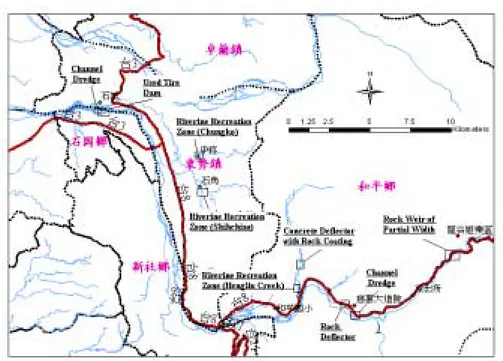

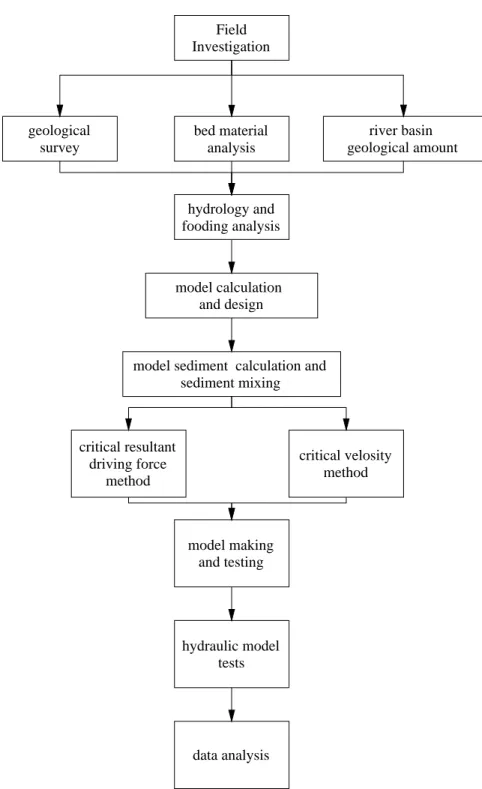
Related documents
In the specific climate where I currently live (Dfb, or Warm Summer Humid Continental), a short breaking in method of around five days, wetting the reeds in room temperature or
In patients with idiopathic normal pressure hydrocephalus postoperative cerebral perfusion changes measured by dynamic susceptibility contrast MRI correlate with clinical
diffusitivity estimated using a trace gas release, iii) integrating gradient technique in which the wind speed weighted average concentration profile was multiplied with the
A likely path that auditors could use to bridge the gap between the current technological skills of an auditor and the skills that would be needed in the audit of highly
To recap the data collection: from a primary instance are generated a lot of secondaries instances; these instances are solved repeatedly with a random permutation heuristic in order
Keywords: White-backed woodpecker, Dendrocopos leucotos, Sweden, deciduous forest, suitable habitat, fragmentation, saproxylic insects, captive breeding, restocking..
The results shed lights on threshold levels for suitable habitats, critical levels of fragmentation, pos- sibilities to artificially increase food supply and on important features for
Kristoffer Stighäll (2015): Habitat composition and restocking for conservation of the white-backed woodpecker in Sweden.. Örebro Studies in Life
